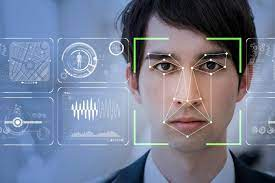Technology at Police Disposal

Figure 3: No Copyright Infringement Intended
Context:
- Delhi Police officers say the facial recognition software they have access to right now can marginally narrow down suspects at best and is a far cry from the dystopian real-time surveillance feared by experts and activists.
Usage of the Facial Recognition Software:
- The police currently use a “basic” level of FRS, which does not function in real-time.
- The software was used to probe a 2020 north-east Delhi communal riots case, and the January 26, 2021, Red Fort incident, when farmers stormed the monument during a tractor rally against new agriculture laws.
- Election Commission, UIDAI and other Ministries do not share data with the force.
Success of the Software:
Helps find missing people and identify perpetrators
- Law enforcement agencies use facial recognition to identify criminals with no other means of identification and find missing people by comparing faces on live camera feeds with those on a watch list.
- They’ve also used it to find missing children, combining facial recognition with ageing software to predict how children would look several years on and find them even when they’ve been missing for years.
Protects businesses against theft
- Facial recognition software can be an effective preemptive measure against shoplifting.
Strengthens security measures in banks and airports
- Facial recognition also helps improve safety and security in non-retail spaces, like airports and banks.
Challenges:
Threatens individual and societal privacy
- The threat to individual privacy is a significant downside of facial recognition technology. People don’t like having their faces recorded and stored in a database for unknown future use.
Imposes on personal freedom
- Being recorded and scanned by facial recognition technology can make people feel like they’re always being watched and judged for their behavior. Plus, police can use facial recognition to run everyone in their database through a virtual criminal lineup, which is like treating you as a criminal suspect without probable cause.
Creates data vulnerabilities
- There is also concern about the storage of facial recognition data, as these databases have the potential to be breached.
Provides opportunities for fraud and other crimes
- Lawbreakers can use facial recognition technology to perpetrate crimes against innocent victims too. They can collect individuals’ personal information, including imagery and video collected from facial scans and stored in databases, to commit identity fraud.
Conclusion
- As facial recognition technology improves, its challenges will decrease. Other technology could impact its effectiveness, including recognizing body parts or how a person walks.



1.png)
